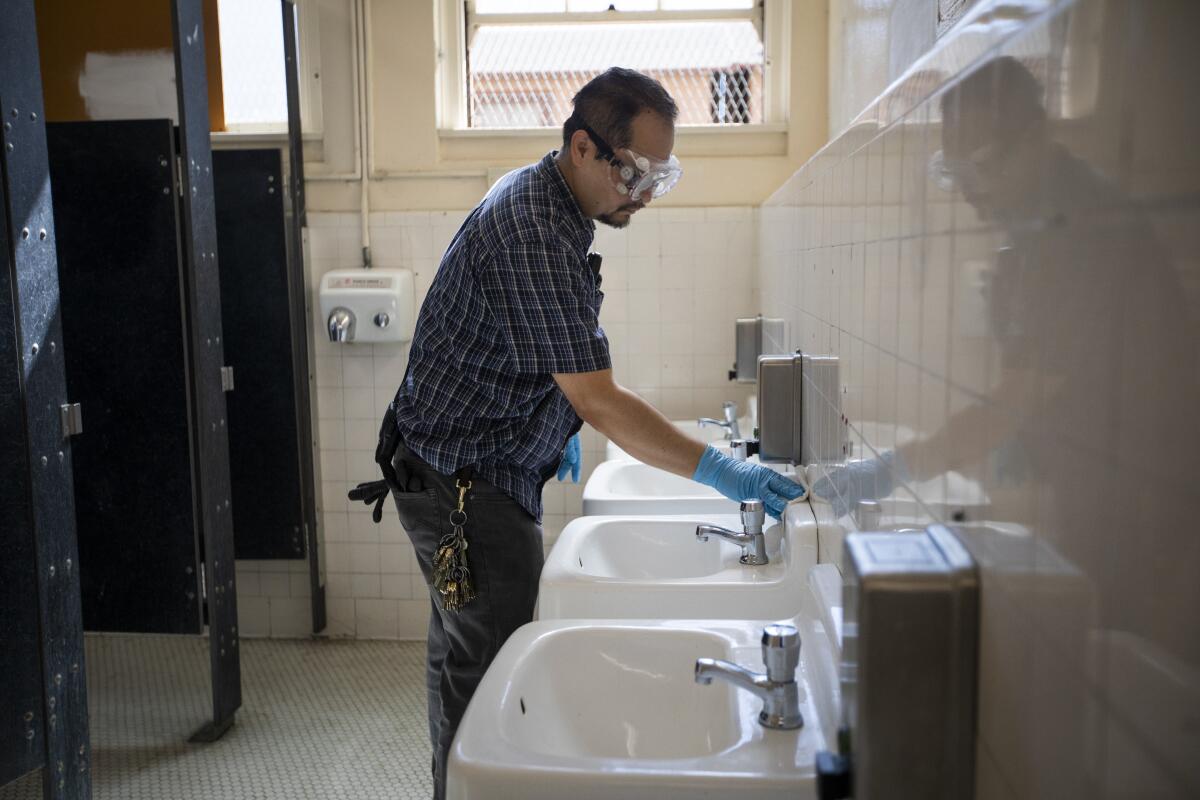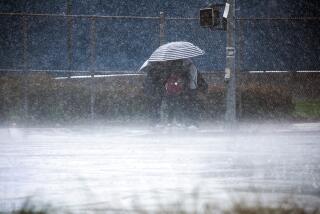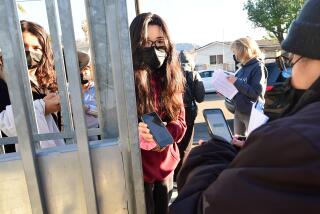When should schools close due to coronavirus? Here are California’s guidelines

Across California, some schools have begun closing and universities are moving to online learning or making preparations to do so as educators ramp up preparations to deal with the global outbreak of the novel coronavirus. Schools say that decisions will likely be made swiftly, and they advise parents and students to be prepared.
But how do schools make the decision to close?
The California Department of Public Health has released guidance for schools and colleges to help determine whether and when to shut campus doors.
When should a school close?
School leaders, in consultation with public health departments, can consider closing their doors if even one student, teacher or staff member has tested positive for COVID-19 and exposed others to the virus, the state guidance says.
How long these schools would remain closed depends on the community — “In consultation with the local public health department, school officials may determine readmission criteria after the school closures,” the guidance says.
If a school does close, officials should remind community members of the importance of keeping their distance from each other outside of school, too.
In L.A. County, public health officials’ guidance to schools states that campuses “may need to close if a significant number of students, staff and/or volunteers have been in close contact with a confirmed case of novel coronavirus” or if there are high rates of staff and student absenteeism that make “safe and effective operations” difficult.
Another possible scenario to warrant closure: Students and/or staff at multiple schools in a district test positive for COVID-19. In that case, the state public health department says, school officials should contact local public health officials to determine whether to close multiple district schools.
“In consultation with the local public health department, the school administrator may determine if additional school closures and what length of time is warranted based on the risk level within the specific community as determined by the local public health officer,” the state guidance says.
L.A. County’s public health guidance is similar:
“A call for large scale closure of many schools would happen only if there was significant community transmission that could not be well-controlled through other strategies,” the L.A. County guidelines say.
The L.A. County Office of Education, which oversees L.A.’s 80 public school districts, is paying attention to both local and state guidelines, department spokeswoman Margo Minecki said in an email. The county public health department “has issued general guidelines that we were following. The new CDPH guidelines are more detailed for various scenarios which are helpful. These guidelines are to be used in conjunction with consultation and guidance from LACDPH,” she said.
What precautions should schools take?
If there are two or more “community transmission cases,” but no one at the school has tested positive, school administrators should encourage teachers and staff to check themselves each morning before school for fever and symptoms like a cough, and stay home if they have symptoms.
Schools should also consider limiting the amount of time students spend together in large groups — that could mean staggering recess times, or conducting large gatherings like assemblies via webcast or intercom instead of in person. Campuses in this scenario should also consider limiting visitors, especially those with a fever or respiratory symptoms, or “who have a travel history over the course of the last 14 days to an area identified by the CDC as Level 3 Travel Health Notice.”
In L.A. County, here are the guidelines for “increased community transmission” of the virus:
“If classrooms stay open, be prepared to divide classes into smaller groups of students and rearrange desks so students are spaced at least six feet from each other in a classroom, as much as possible.”
When should students stay home from school?
Common sense prevails in this case as in all other sicknesses that youths pass to each other— if a child shows symptoms, keep them home.
The guidance instructs schools to “send students, faculty, and staff who present with fever and/or respiratory infection symptoms home immediately.”
Colleges who have students or faculty living on campus with those symptoms should place the sick individual in a private room with its own bathroom.
How long should kids stay home?
Students should stay home or in their dorms, if they’re in college, until the “fever has been gone for at least 24 hours without the use of fever-reducing medicines,” according to the state guidance.
Do I need a doctor’s note?
Public health officials recommend against them. L.A. County’s coronavirus guidance to schools says: “Do not require a healthcare provider’s note for employees or students who are sick with acute respiratory illness to validate their illness or to return to work. Healthcare provider offices and medical facilities will be extremely busy and not able to provide such documentation in a timely way.”
More to Read
Sign up for Essential California
The most important California stories and recommendations in your inbox every morning.
You may occasionally receive promotional content from the Los Angeles Times.











